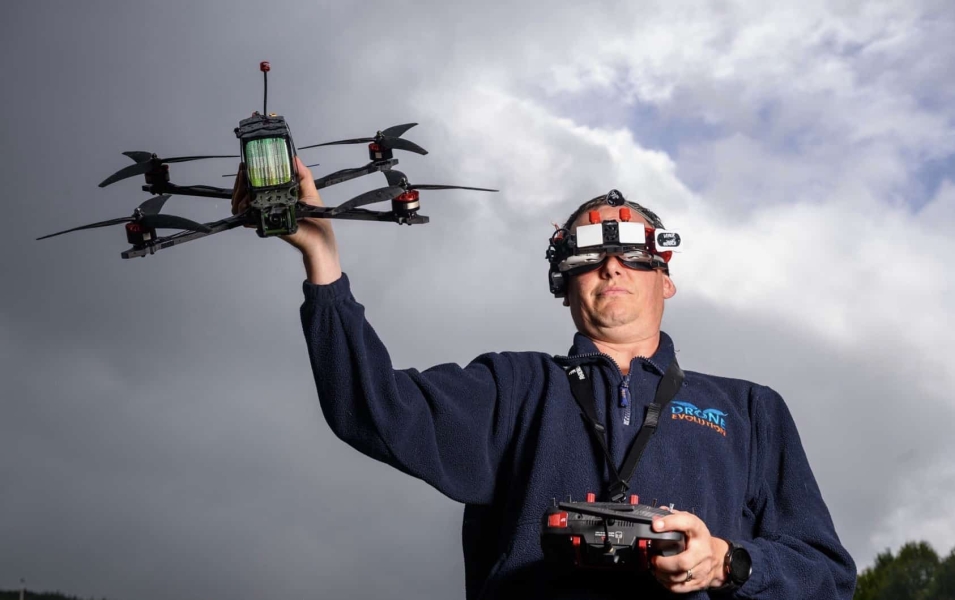British FPV ‘kamikaze’ Drones Ready—MoD Delays Keep Them Grounded

Snag the 2025 Apple MacBook Air M4 13-inch for $799 (Save $200!) – Limited Amazon Deal!
Britain’s push to adopt attack drones modeled on Ukraine‘s battlefield tactics is faltering as procurement red tape leaves promising domestic systems chasing sheep on Welsh hillsides instead of targets in training ranges, according to a report in The Telegraph.
Drone Evolution, a small UK manufacturer, has developed £1,000 ($1,250) first-person-view (FPV) drones capable of carrying 5 kilograms (11 pounds) over ranges of up to 30 kilometers (18 miles). But despite government pledges to boost “disposable” kamikaze drones to make up 40% of stockpiles, the Ministry of Defence has yet to place significant orders.
Small Firms Ready, but Procurement Stuck
Toby Townrow, co-founder of Drone Evolution, said his company can already offer drones “at scale” but is still waiting for the UK market to give a green light. “That’s the $64 million question,” he told The Telegraph, referring to why no contracts have materialized.
The government recently launched a £700 million ($875 million) defence industrial strategy and pledged to raise spending to 3% of GDP. Still, industry insiders describe procurement as “sluggish, complex and risk-averse.” Smaller firms also face steep barriers to bidding. Revenue thresholds as high as £26 million ($32.5 million) have excluded startups, despite their ability to rapidly design and adapt drones.
Technical Capabilities and Field Testing
Drone Evolution’s FPVs—nicknamed the “Scimitar”—come in 10-inch and 7-inch variants.
- 10-inch model: Up to 30 km (18 miles) range, 5 kg (11 lbs) payload, £1,000 ($1,250) cost
- 7-inch model: Up to 15 km (9 miles) range, 2 kg (4.4 lbs) payload, £750 ($940) cost
Engineers have weatherproofed onboard cameras, allowing visibility even during heavy rain, a feature expected to give operators an edge against Russian drones, which often fail in poor conditions. Testing, however, has been hindered by UK regulations restricting drone flights to within 500 meters (1,640 feet) visual range. Drone Evolution had to drive its aircraft to Latvia to conduct proper trials.
Industry Calls for Reform
Analysts warn that the UK risks falling behind. Robert Tollast of the Royal United Services Institute said early production is critical: “Even if we don’t want to fight quite like Ukraine, we’re going to need a lot more drones and a lot more production.”
Justin Hedges of Prevail Partners added that Britain must speed up procurement: “I think British defence is really struggling to make itself quicker and more efficient.”
Government officials acknowledge the challenge. Defence Secretary Jon Healey said at the DSEI arms fair that the UK is seeking “a radically different relationship with industry” to cut waste and shorten procurement cycles.
DroneXL’s Take
Britain’s slow-moving procurement process highlights a fundamental tension: the battlefield is evolving faster than government bureaucracy. With Ukraine demonstrating the decisive role of cheap FPVs, the UK risks missing a window to support domestic manufacturers who can deliver low-cost, adaptable systems at scale.
For drone professionals, the takeaway is clear: agility and affordability are becoming as important as advanced features. If the UK fails to back its innovators, it may be left dependent on foreign suppliers when the next conflict demands swarms of cost-effective drones.
What do you think—should the UK prioritize speed over caution in drone procurement? Share your thoughts in the comments below.
